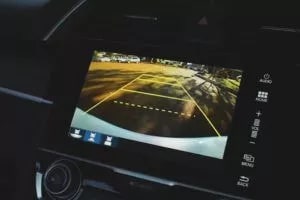Since the first mass-produced Model Ts became available in the early 1900s, car safety features have become increasingly sophisticated and widely adopted. Today, advanced driver assistance systems (ADAS) use specialized sensors, cameras, and onboard software to help drivers detect emergency situations and prevent accidents. But how much do these car accident avoidance safety systems actually reduce car accidents in America?
If you have questions about modern car safety features that avoid accidents and how they could affect your car insurance or accident claim, contact Teddy, Meekins & Talbert, P.L.L.C. to learn more.The consultation is free and confidential.
Types of Advanced Car Safety Features
New advanced car safety features are being introduced on vehicles every day. Some of the most common and effective ADAS features include:
- Adaptive cruise control (ACC)– A type of “smart” cruise control that automatically slows or accelerates a vehicle to keep pace with the traffic in front of it, within a maximum speed and following distance set by the driver.
- Automatic emergency brakes (AEB)– Brakes with a special safety feature designed to detect surrounding vehicles and slow or stop a car automatically if drivers do not react in time to prevent an imminent collision.
- Backup cameras– Cameras on the back of cars send video feeds to in-dash displays so that drivers can see what is behind them, both above and below the rear window line, as they drive in reverse.
- Blindspot detection monitors– Popular safety features that use radar to detect approaching obstacles on the side of a car and then beep, vibrate the steering wheel, or flash warning lights on mirrors to alert drivers to the potential hazard.
- Collision warning systems– Newer technologies that use sensors to scan traffic and send warning signals to drivers, or even work in conjunction with AEB systems to slow or stop cars automatically, when they detect possible collisions.
- Cross-traffic alert systems– Specialized collision warning systems that scan behind a vehicle moving in reverse to warn drivers if vehicles are about to cross their path.
- Lane departure warning technologies– Systems that deploy cameras or sensors to track pavement markings on the road and warn drivers if they begin to drift out of their lanes unintentionally.
- Pedestrian detection systems– Technologies that can warn drivers, and sometimes even deploy automatic emergency brake systems, when they detect a possible pedestrian collision event.
- Traction control (TC) technologies– Common ADAS features designed to reduce wheel spin and skidding when drivers lose control of their traction.
- Traffic sign recognition (TSR) systems– Technologies that use image processing software to detect road signs, analyze their meaning, and display relevant information to drivers in the form of dashboard alerts.
- Voice command controls– Increasingly common features in modern cars that allow drivers to adjust certain settings by speaking specific command phrases, which can help reduce distracted driving accidents.
The popularity of these advanced safety features is growing rapidly. Some estimates gauge that the global ADAS market will display a growth rate as high as 12 percent per year over the next decade to reach a value of $83 billion by 2030, according to Forbes.
Do They Reduce Accident Rates and Severity?
Advanced driver assistance systems certainly sound impressive, but do they live up to the hype? So far, the answer from the available data is a resounding “yes.” Recent studies from the Insurance Institute for Highway Safety, LexisNexis Risk Solutions, and researchers at Carnegie Mellon Universityindicate that:
- Vehicles equipped with blind-spot monitoring systems have a crash involvement rate that is 14 percent lower than cars without such systems.
- If every vehicle sold in the U.S. in 2015 had been equipped with blind-spot monitoring technology, as many as 50,000 collisions and 16,000 related injuries could have been avoided that year.
- The combination of blind-spot monitoring, lane departure warning, and forward-collision monitoring systems together reduce the overall prevalence of vehicle crashes by 3.5 percent.
- If all vehicles in the United States were equipped with blind-spot monitoring, lane departure warning, and forward-collision monitoring systems, more than 220,000 crashes could be prevented each year.
- Drivers of ADAS-equipped vehicles that become involved in accidents are 27 percent less likely to sustain bodily injuries and 19 percent less likely to incur property damage.
- If all light-duty vehicles in America had crash avoidance technologies installed, subsequent cost savings could be as high as $250 billion.
Insurance Rate Decreases Related to Safety Features
New cars are typically more expensive to insure since it’s far more costly to repair a car with newer technology, but what if they have the latest ADAS features to help prevent accidents?
While it may seem to make sense that the insurance premiums on these vehicles would be lower, the insurance industry as a whole hasn’t quite caught up with the times yet. The way insurance providers currently see it, advanced driver assistance systems are more expensive to replace if they are damaged in an accident. Even though cars equipped with them have fewer accidents overall, their policies are just as expensive or sometimes even pricier than those for similar vehicles without ADAS, according to an NPR article.
It’s possible that additional research and data about the effectiveness of ADAS features may give insurers a better understanding of their utility, but this could take years. This is because insurance providers use past data to estimate the likelihood of future expenses. There’s not enough data yet showing that advanced driver assistance systems save both lives and money.
Regardless of the economic impact, though, it’s safe to say that vehicles equipped with these systems have incentives that go beyond financial considerations. Insurance providers may come to this conclusion sooner rather than later and adjust their policies accordingly to encourage ADAS technologies.
Contact a Car Accident Attorney in North Carolina
Whether or not your vehicle is equipped with ADAS technologies, you deserve competent legal representation if you’ve been involved in a North Carolina car accident. To schedule your free, no-obligation consultation, call the dedicated car accident attorneys of Teddy, Meekins & Talbert, P.L.L.C., or fill out our convenient online contact formtoday.
A native North Carolinian and a fourth-generation lawyer, Ralph W. Meekins literally had the desire to help those who are not able to help themselves as well as to be a practical life adviser to people in his blood.



